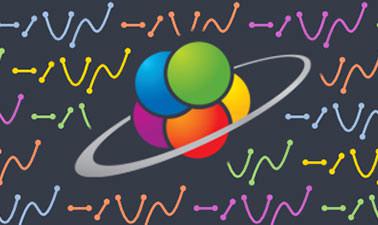The online simulations of graphs of mathematical functions on this page will allow you to visualize graphically different mathematical functions and check how the graphs change by altering some of their parameters
What are graphs of mathematical functions
The graph of a mathematical function is the visual representation of all possible solutions of that function. This is most commonly done in a two-dimensional system, where each solution is expressed as a point in the plane. However, there are also three-dimensional graphs that allow representing functions of two independent variables, where the values are located in a three-dimensional space. The graphical representation of functions is a powerful tool in mathematics that allows visualizing and understanding the behavior of a relationship between two or more variables.
Coordinate systems
The graphical representation of a function is done in a coordinate system. There are different systems, each of which offers specific tools best suited to different types of analysis and geometric problems.
Cartesian coordinate system
The Cartesian coordinate system is the most commonly used coordinate system and is composed of two perpendicular axes: the x-axis (horizontal) and the y-axis (vertical). In this system, points are represented by ordinate pairs that indicate their location in the plane, which facilitates both the analysis and the graphical representation of mathematical functions. To plot the graph of a function, values are assigned to the independent variable (x) and the corresponding values of the dependent variable (y) are calculated using the function rule. The obtained points (x, y) are plotted on the Cartesian plane and connected by continuous lines or smooth curves. This set of points forms the graphical representation of the function.
Polar system
In the polar system, each point is defined by an angle and a distance from a point of origin called the pole. This system is especially useful for describing curves and figures that have radial symmetry, such as circles and spirals.
Cylindrical coordinate system
The cylindrical coordinate system extends the polar system with a third coordinate to describe the height of a point in three-dimensional space. It is useful in physics and geometry problems involving cylinders or circular structures.
Spherical coordinate system
The spherical coordinate system, on the other hand, is used primarily in three-dimensional problems where points are described in terms of a radius and two angles.
Analysis of graphs of mathematical functions
The graph of a function can have several characteristics, such as slope, concavity, points of intersection with the axes, as well as horizontal or vertical asymptotes. These features provide valuable information about the behavior of the function.
By analyzing the graph of a function, properties such as growth or decay of the function, maxima and minima, inflection points and symmetry can be determined. In addition, the graphical representation allows the visualization of patterns, trends and relationships between variables, which facilitates the interpretation of the results.
Application and technology of graphs of mathematical functions
The graphical representation of functions is widely used in various areas, such as physics, economics, engineering and biology. It helps to model phenomena, predict behavior and make decisions based on data.
Current technology, such as computer plotting programs and graphing calculators, greatly facilitates the graphing of functions. These tools allow accurate and detailed graphing of complex functions, which helps to explore and better understand their behavior.
The online simulations of graphs of mathematical functions on this page are a great tool that can help you in many different ways – don’t miss them!
Explore the exciting STEM world with our free, online simulations and accompanying companion courses! With them you'll be able to experience and learn hands-on. Take this opportunity to immerse yourself in virtual experiences while advancing your education - awaken your scientific curiosity and discover all that the STEM world has to offer!
Simulations of graphs of mathematical functions
- Linear
- Quadratic
Graphs of linear functions
Explore the world of lines. Investigate the relationships between linear equations, slope, and line graphs. Test yourself in the line game!
File
Graphs of quadratic functions
Discover how changing the coefficients changes the shape of a curve. View graphs of individual terms (e.g., y = bx) to see how they add up to generate the polynomial curve. Generate definitions for vertex, roots, and axis of symmetry. Compare different forms of a quadratic function. Define a curve by its focus and directrix.
File
STEM education equipment
Mathematics courses


Maths Essentials



Polynomials, Functions and Graphs



Introduction to Algebra



Pre-University Calculus



Linear Algebra IV: Orthogonality & Symmetric Matrices and the SVD



Linear Algebra III: Determinants and Eigenvalues



Linear Algebra II: Matrix Algebra



Linear Algebra I: Linear Equations
















